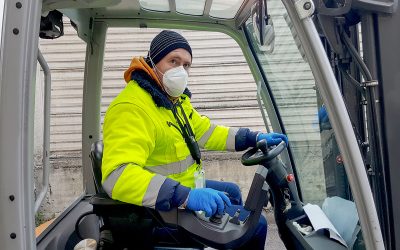Some distributors are updating their price segmentation schemes to ensure they reflect these evolving conditions by overlaying a COVID-19 demand category attribute to complement traditional segmentation schemes.
Latest In Strategy
The 0.3% improvement follows 10 weeks of declines and nine weeks of double-digit declines.
ASA is part of a coalition asking Congress to act quickly to enact temporary COVID-19 liability protections.
While the COVID-19 pandemic has slowed M&A to a crawl in distribution and most sectors, companies that chose to hunker down rather than innovate during the pandemic could be targeted by savvy strategic and financial buyers once activity resumes.
Distribution leaders that emphasize innovation during this time of uncertainty will be at an advantage when the so-called new normal whatever that looks like has settled in. One area where companies can innovate is by transforming their sales models. The latest MDM Live explains why.
International coronavirus stay-at-home orders have accelerated the imperative for distributors to improve virtual sales tactics. MDMs most-read blogs of May continued to focus on COVID-19 and its long-term effects for the distribution industry, particularly the sales process.
The 11.4% decline represents the smallest decline since mid-March.
When volume compresses, your contract pricing will be under pressure from your end customers. At the same time, you will have to react to many price changes from your manufacturer partners. MDMs John Gunderson says, if you dont have a tracking system built for your CSP/contract prices, it is time to get one in place.
Today’s environment may be full of factors outside of our control, but distributors also have an opportunity to re-examine long entrenched practices and explore new, more efficient ways of doing business.
Today’s environment may be full of factors outside of our control, but distributors also have an opportunity to re-examine long entrenched practices and explore new, more efficient ways of doing business.
The index shows eight weeks of double-digit average declines and five consecutive weeks with declines in the mid-teens.
Blindly following a competitors lead or treating every customer the same are two common mistakes that distributors cant afford to make in todays environment. Consultant Robert Sabath explains how these and other common actions can hold you back.

In a recent virtual conversation with a few hundred Texas A&M Industrial Distribution students, the next generation had a lot to say about what changes they see in B2B distribution after the full impact of COVID-19 becomes clear. The future of distribution is moving faster than any of us thought possible, and its looking brighter with the talent coming online.
Revenue declines may be stabilizing.

For employees who are traditionally customer-service oriented, making cold calls requires a different skill set. Eric Chernik, CEO of Building Controls & Solutions, is providing training and tools for all employees, such as customer call lists with outbound call scripts, to grow business during the coronavirus slowdown.

COVID-19 has sped up the digital evolution of the sales department. MDMs John Gunderson explains how to keep your sales people selling with the effective tactics they have picked up during coronavirus distancing, put an end to ineffective practices of the past, and use data to take share from competitors even in a down market.

There is an escalating response to the economic impact of the coronavirus among distributors, increasing furloughs and hiring freezes, management consulting firm Alexander Group finds. However, forward-looking distributors are also putting plans into place to convert competitors customers and grow digitally.
MDM’s Tom Gale is optimistic that over the next several months distribution will play such a critical role in getting our economy off its back and to fully functioning capacity as quickly as possible.
MDM’s Tom Gale is optimistic that over the next several months distribution will play such a critical role in getting our economy off its back and to fully functioning capacity as quickly as possible.

Four critical actions to take for an effective transition of sales teams to this new environment include reassurances about compensation, addressing performance gaps, elevating customer conversations and training on new customer interactions.

